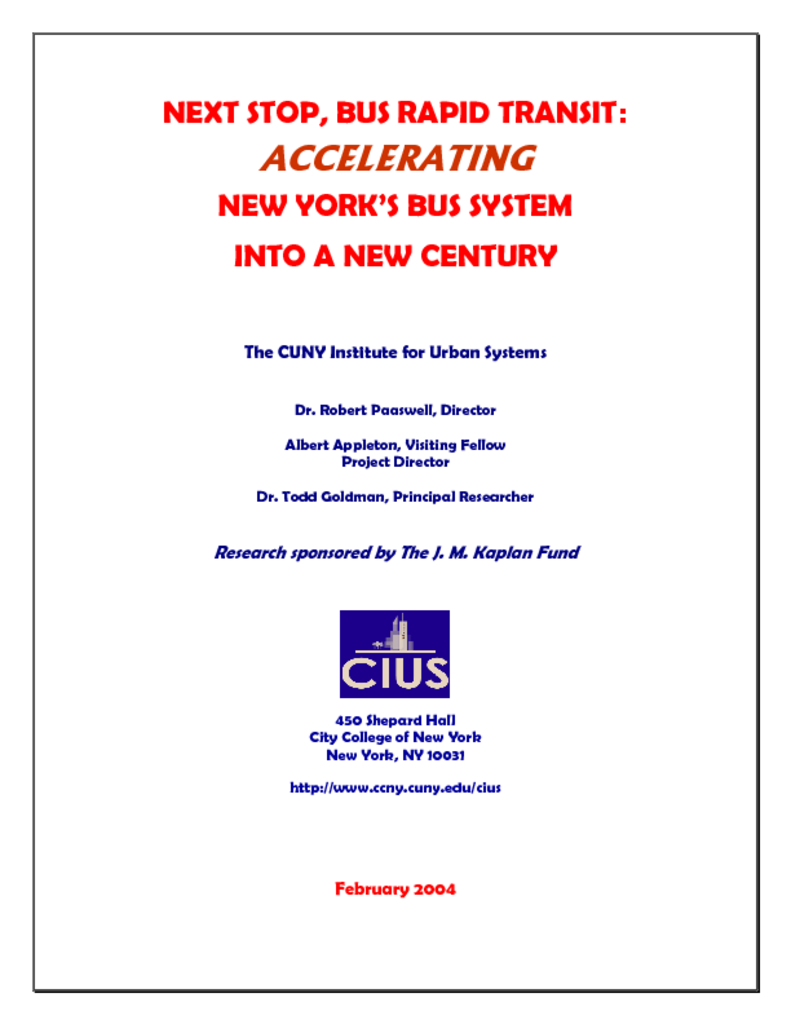<p>This study was undertaken to examine how to introduce bus rapid transit (BRT) in New York City. In recent years, the idea of bus rapid transit ? innovative bus services providing superior speed and convenience to traditional bus service ? has attracted growing interest both here and across the United States. The tremendously successful BRT systems in Bogotÿ, Colombia and Curitiba, Brazil, have stirred worldwide interest in whether BRT could be introduced elsewhere. In 1998, the Federal Transit Administration initiated a Bus Rapid Transit Demonstration Program that has fostered projects in twelve cities. New York City, where more passengers use buses than in the next five largest U.S. transit cities combined, has adopted many innovations over the last two decades to improve the quality of its existing bus service. But it has been slow to pursue the potential of BRT. The popular image of bus rapid transit has largely been shaped by Curitiba?s specially designed buses, loading tubes, and exclusive running ways. Due in part to the Curitiba model, bus rapid transit is often explained to the public as the equivalent of light rail transit on rubber tires. But this presentation of BRT as a 'silver bullet' solution to transit problems has the effect of distracting public attention from solutions that are better suited to the complex characteristics of large, mature cities. Large cities that have taken the lead on bus rapid transit have organized their efforts around a strategic goal: providing a level of bus service that can successfully compete for discretionary riders. They have pursued this goal through multi-element service strategies that are tailored to local circumstances and integrated with the area?s overall program of bus service. Viewed as a low-cost attempt to duplicate the features of light rail service, BRT has had few practical applications for New York. But understood as a combination of road management and service strategies that are integrated with an overall customer service approach to bus service, BRT can become a powerful tool for promoting bus ridership in New York.</p>




